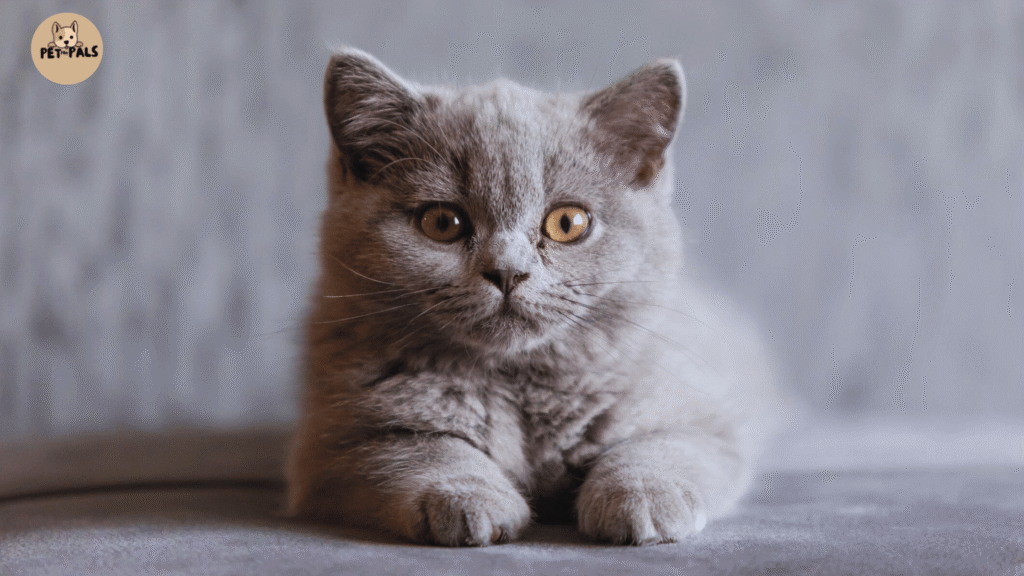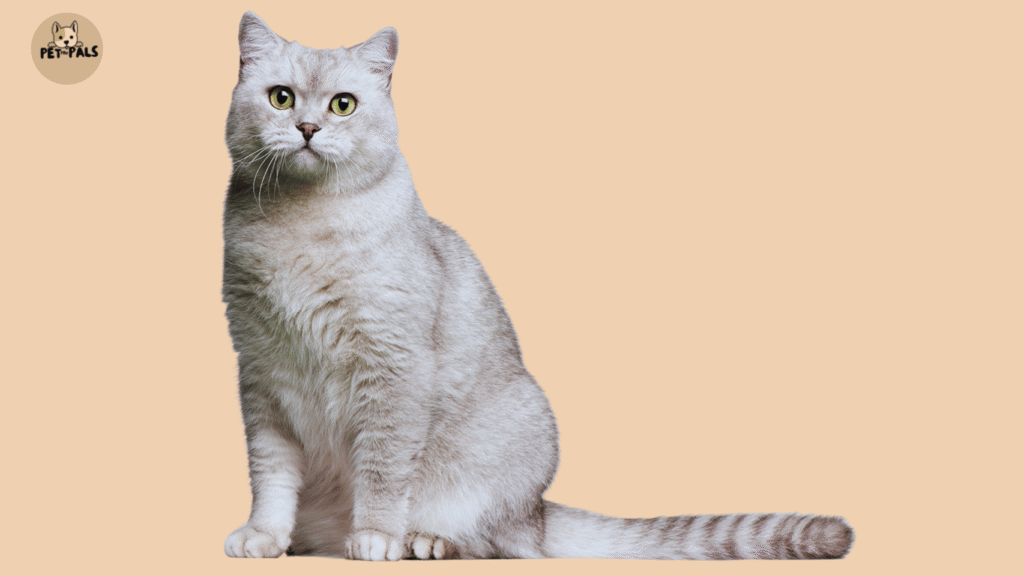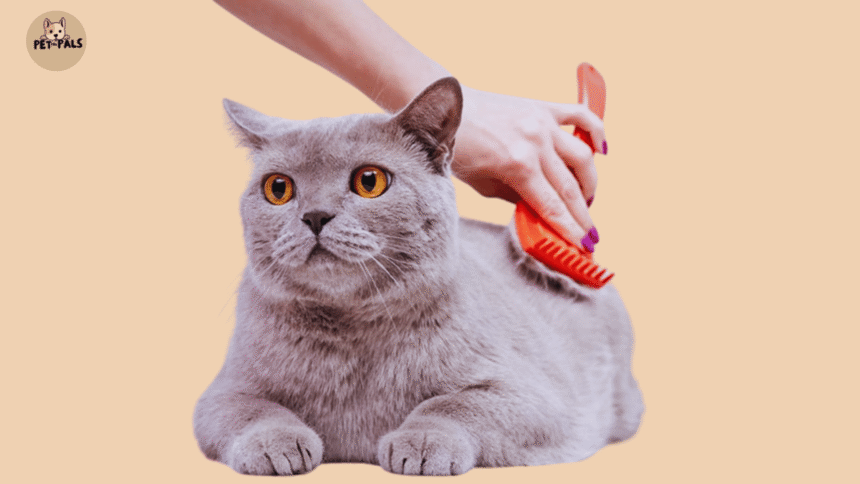Caring for a British Shorthair cat involves more than just meeting their basic needs,it’s about understanding the unique traits and preferences that define this beloved breed. Known for their plush coats, round faces, and calm demeanor, British Shorthairs are both charming and relatively low-maintenance, making them a favorite among cat lovers.
Whether you’re a first-time owner or looking to refine your current routine, knowing how to care for a British Shorthair can make all the difference in their health and happiness. From grooming habits and nutritional needs to daily activity and the right home environment, this guide will walk you through every essential aspect of British Shorthair cat care.
Here’s what to expect as we explore British Shorthair maintenance needs, including coat care, diet, exercise, and ideal living conditions, to help you give your cat the best life possible.
Grooming Needs & Tools For British Shorthair Cat Care

The British Shorthair’s signature look, a thick, plush coat with a crisp texture, is both beautiful and functional. But that luxurious fur comes with its grooming responsibilities.
British Shorthair grooming
British Shorthair grooming is relatively simple, but consistency is key. Due to their dense double coat, it’s recommended to brush your cat at least once a week to remove loose hairs and prevent buildup.
Wondering how often to brush a British Shorthair during shedding season? In the spring and fall, when they shed more heavily, increasing grooming sessions to two or three times a week can help manage excess fur and reduce the risk of matting.
How Often Should to Brush a British Shorthair?
While British Shorthairs are not prone to tangles like long-haired breeds, their thick undercoat can still trap dander and loose hair. Regular brushing helps maintain coat health, manage British Shorthair shedding level, and keep allergens to a minimum, especially helpful for allergy-sensitive households.
Best Brush for British Shorthair
When choosing the best brush for a British Shorthair, look for a firm-bristle or rubber grooming brush that can reach through the dense coat without irritating the skin. Slicker brushes or grooming mittens are also great tools for catching loose hairs and distributing natural oils, giving your cat’s coat a healthy shine.
By maintaining a regular grooming routine, you not only support your cat’s skin and coat health but also strengthen the bond between you and your British Shorthair.
Recommended Tools & Products For British Shorthair Cat Care

When it comes to grooming your British Shorthair, having the right tools on hand can make the process of British Shorthair Cat Care smoother, quicker, and more enjoyable for both of you. While their coat may be short, its density calls for tools that are effective yet gentle on the skin.
Grooming Tools for Shorthaired Cats
Start with essential grooming tools for shorthaired cats. A slicker brush or fine-toothed comb works well for reaching the undercoat and catching loose hair without tugging. A cat grooming glove is also a popular choice, perfect for cats who are sensitive to traditional brushes. These gloves allow you to groom while petting, making the experience feel more like affection than maintenance.
Cat-safe Shampoo for Short Coats
Occasional bathing may be necessary, especially if your cat gets into something messy or has a skin condition. Always use a cat-safe shampoo for short coats, formulated to be gentle, non-toxic, and easy to rinse. Avoid human shampoos, which can disrupt your cat’s skin pH balance and cause irritation.
Other helpful additions to your grooming kit might include:
- A lint roller for managing shed hair around the home
- Pet wipes for quick clean-ups
- A de-shedding tool for peak shedding season
Investing in the right products not only supports your cat’s health and comfort but also makes routine grooming more effective. Many of these tools are budget-friendly and widely available, making it easy to build a well-rounded grooming kit tailored to your British Shorthair’s needs.
Dietary Recommendations
Choosing the best cat food for British Shorthair cats means focusing on quality nutrition tailored to their unique build and needs. British Shorthairs are known for their sturdy, muscular bodies, so a British Shorthair diet plan should emphasize a balanced intake of protein, healthy fats, and essential nutrients.
High-quality, high-protein cat food is key. Protein supports muscle maintenance and overall vitality. Look for foods rich in animal-based proteins and supplemented with important nutrients like taurine—an amino acid vital for heart and eye health, and omega-3 fatty acids to support skin and coat condition.
Since British Shorthairs have a tendency toward a heavier build, selecting nutrient-dense food that helps maintain lean muscle mass without excess calories is crucial. Avoid fillers and artificial additives that contribute little to their health.
Feeding Guidelines
Understanding how much should a British Shorthair eat is essential to prevent overfeeding and obesity, which can lead to joint issues and other health problems. Portion sizes vary by age, weight, and activity level. Kittens require more frequent, smaller meals, while adult cats typically thrive on two measured meals per day. Seniors may need adjustments based on metabolism and health status.
A cat feeding schedule by age usually looks like this:
- Kittens: 3–4 meals daily
- Adults: 2 meals daily
- Seniors: 1–2 smaller meals daily, depending on health
Balancing wet and dry food options can help optimize hydration and nutrition. When deciding between wet food vs dry food for British Shorthairs, consider that wet food offers higher moisture content, which supports urinary tract health and hydration, important for a breed prone to weight gain. Dry food provides convenience and dental benefits, but should be paired with ample fresh water or a cat fountain to encourage drinking.
Finally, be mindful of potential food sensitivities or allergies, and consult your vet to tailor the diet specifically for your British Shorthair’s health needs. With the right feeding approach, you can keep your cat fit, happy, and thriving for years to come.
Exercise & Play Needs

British Shorthairs may be known for their laid-back nature, but that doesn’t mean they don’t need regular movement. So, do British Shorthairs need exercise? Absolutely—but in moderation. As a low-energy cat breed, they’re not naturally hyperactive, but they still benefit from daily activity to maintain a healthy weight and stay mentally sharp.
How to Play with a British Shorthair Cat
Knowing how to play with a British Shorthair is all about finding the right balance between stimulation and comfort. These cats often prefer short bursts of interactive play rather than long, intense sessions. Incorporating indoor play essentials like puzzle feeders and treat-dispensing toys can turn mealtime into a mentally engaging activity while also slowing down eating.
Best Toys for British Shorthair Cat
Interactive toys like feather wands, laser pointers, and motorized mice can encourage bursts of movement, helping your cat get the exercise they need without overwhelming their calm nature. Aim for two 10–15 minute play sessions per day to support healthy activity levels.
Low-energy Cat Breed Exercise
For times when you’re not around, provide solo enrichment tips like rotating their toys regularly, setting up a cat tree or window perch, or using puzzle toys that challenge their hunting instincts. The best toys for British Shorthair cats are ones that appeal to their curiosity without requiring too much energy, such as slow-moving toys or ones that mimic prey behavior.
Keeping your British Shorthair engaged and gently active not only prevents obesity but also supports mental wellness and reduces boredom-related behaviors. It’s a simple but vital part of daily care for this dignified and charming breed.
Environment & Living Conditions For British Shorthair Cat

British Shorthairs are creatures of comfort who thrive in calm, well-structured environments. While they’re not demanding, they do have specific preferences when it comes to their living space. Understanding how to set up a safe and enriching home helps meet their physical and emotional needs, whether you’re in a spacious house or a compact apartment.
Let’s look at the ideal indoor setup and explore whether outdoor access is suitable for this grounded, gentle breed.
Indoor vs. Outdoor Living
Many cat owners wonder: Can British Shorthairs go outside? Technically, yes—but it’s not always recommended. Are British Shorthairs indoor cats by nature? Absolutely. Their calm temperament and strong sense of territory make them much better suited for life indoors, where they feel secure and less exposed to the risks of outdoor roaming.
The safest environment for a British Shorthair is a quiet, stable home with plenty of enrichment and predictable routines. These cats are not as adventurous as some other breeds, and they don’t have the same street smarts to navigate outdoor dangers like traffic, predators, or unfamiliar animals. If you’d like your cat to enjoy the outdoors, consider a secure catio, leash training, or supervised patio time.
Ideal Home Setup
Creating the best environment for a British Shorthair starts with understanding their preferences: calm, cozy, and controlled. They don’t need a large space, which makes them excellent, calm cat breeds for apartments, as long as their space is thoughtfully arranged.
Start by cat-proofing your home. Keep harmful plants, small choking hazards, and unsafe chemicals out of reach. Offer vertical spaces like cat trees or wall shelves to give them a sense of territory and comfort. Window perches are a favorite, offering quiet entertainment and a sunny place to nap.
Because British Shorthairs are not fans of chaos, avoid placing their essentials, like food bowls and litter boxes,in high-traffic or noisy areas. Provide a few soft, secluded resting spots where your cat can retreat when they want quiet time.
They typically do well with other calm pets, but early introductions should be slow and respectful of their need for personal space. Their easygoing nature means they can live harmoniously with other cats or even well-mannered dogs, provided the environment remains low-stress.
Conclusion
British Shorthairs are a joy to live with, calm, affectionate, and delightfully independent. But like any breed, they thrive best when their specific needs are understood and met with care. From grooming their plush coats to managing their weight through diet and gentle play, every detail counts in supporting their well-being.
Whether you’re a first-time cat owner or new to the breed, these British Shorthair cat care tips offer a reliable starting point. Remember, no cat is entirely maintenance-free, but with this low-maintenance cat breed, the right environment, routine, and a little love go a long way.
Stay proactive with regular vet visits, provide a safe and stimulating home, and enjoy the steady companionship of one of the most charming feline friends you could ask for.
FAQs
Do British Shorthairs shed a lot?
Yes, British Shorthairs do shed, especially during spring and fall. Their dense double coat benefits from weekly brushing to control shedding and prevent hair buildup.
What is the best diet for British Shorthair cats?
The best diet for British Shorthairs is high in protein with balanced fats, taurine, and omega-3s. Choose quality wet or dry food formulated for indoor or less active cats to maintain a healthy weight.
How often should I groom my British Shorthair?
Groom your British Shorthair once a week. Increase brushing to 2–3 times weekly during seasonal shedding to manage loose hair and reduce allergens.
Are British Shorthair cats active?
British Shorthairs are moderately active. While they enjoy playtime, they’re a low-energy breed that prefers short bursts of activity over high-energy play.
Can British Shorthairs live in small apartments?
Yes, British Shorthairs adapt well to apartment living. Their calm, quiet nature makes them ideal for smaller spaces, as long as their environment includes enrichment and a quiet resting spots.

